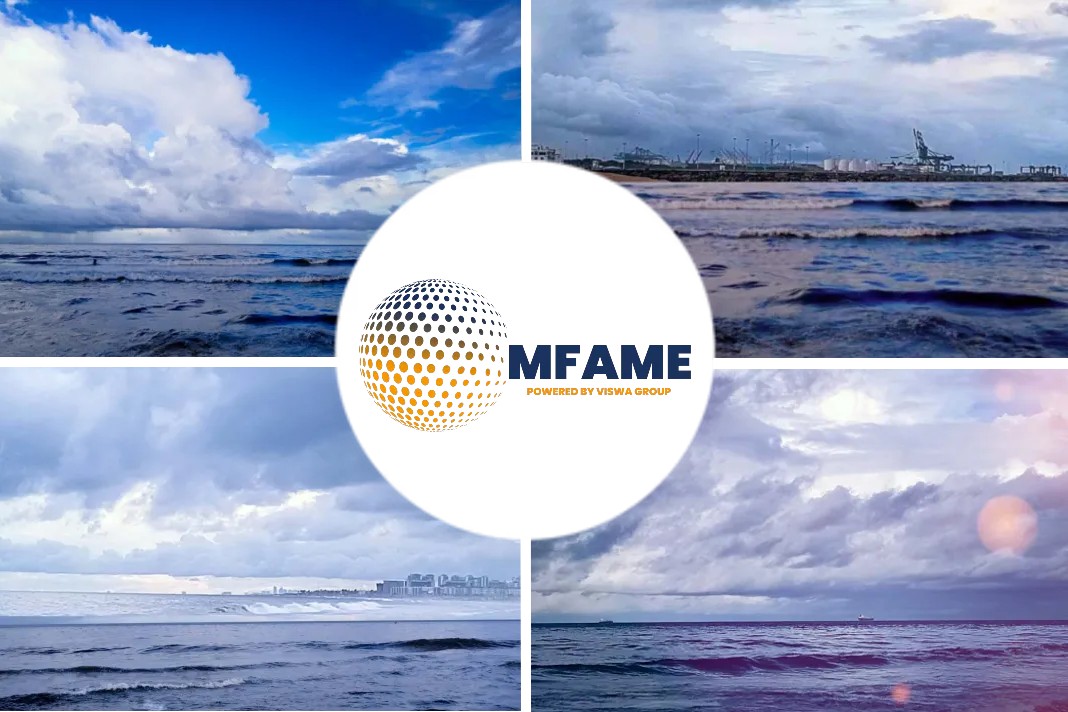The Greek-flagged container ship Maersk Kure, sailing from Rotterdam, arrived at the container terminal in Bremerhaven on the night of 6 February 2016.
Summary of events
The ship’s command was advised by a pilot to assist in the berthing maneuver, one tug was made fast fore and another aft. After the fore and aft springs and two headlines were each put ashore, the tugs were cast off. After that, the second spring was to be put ashore at the bow.
A seaman had already attached the heaving line to the eye of the second spring and begun to pay out the line through a fairlead on the starboard side. To this end, he had to stand right next to the deployed spring.
This line parted suddenly and struck the seaman such that he collapsed immediately. The crew members present pulled him out of the danger area of the lines, advised the bridge, and then attempted to resuscitate him. The casualty was later carried down the gangway to the pier on one of the ship’s stretchers, where the crew of the requested ambulance took charge of the subsequent medical care. Despite all efforts, the seaman passed away en route to the hospital.
Analysis report
- Medical – The chief mate and his team on the forecastle responded extremely quickly by informing the master on the bridge and initiating first aid measures on the casualty. However, this raises the question as to whether it would have been better for the casualty to leave him in the prone position and let the rescue services remove him from the ship.
- Precisely when knowledge of the internal injuries was lacking and with the certainty that the ship is at the pier and a medical emergency team will arrive soon, it would not have been necessary to take the casualty ashore using shipboard equipment.
- This action was not found to have any adverse effects. Needless to say, the BSU assumes that all the crew members were acting in the best interest of the casualty and were under stress in this exceptional situation.
- Mooring line – It should be noted in general that mandatory guidelines for the inspection of mooring lines do not exist anywhere in the world. However, the Cordage Institute does issue guidelines and their implementation is strongly recommended.
- The investigation of the parted line by acknowledged experts based on the above guidelines gave rise to the conclusion that the external damage to the line alone was so clear that it must have been evident to the ship’s crew. The line should have been replaced long ago and it is highly likely that this accident would have been avoided if it had been.
- Since the line was first kept in storage for many years in this specific case, it should be noted that recommendations on how long a line can be stored without being used do not exist. The manufacturer of such polypropylene lines merely stresses that a line should be stored in a dry area and not exposed to sunlight.
Actions taken
- After an enquiry by the BSU, the owner stated that the parted line had been immediately replaced by a new one. Furthermore, it was asserted that the Cordage Institute is a body that represents the interests of industrial line manufacturers and that its guidelines are not mandatory.
- The Code of Safe Working Practices for Merchant Seafarers (2015)6, which is also non-mandatory, is exercised on board the MAERSK KURE. Although very extensive, this does not address the particulars of inspecting lines – in sections 18.2 and 18.33, in particular – to the extent proposed by the Cordage Institute’s Guideline.
- In particular, it does not require the documentation of line inspections. Consequently, the owner submitted as written evidence various Port State Control documents from the year 2015. These indirectly confirmed there were reported no adverse findings as regards the mooring lines, either.
Shortcomings noted
- First-aid measures – Casualties should be moved as little as possible. If they are moved, then preferably only after consulting a medical practitioner. Of course, casualties need to be moved out of an area of immediate danger as soon as possible. However, if medically trained assistants are available, then they should take charge of the transport.
- Inspection of mooring lines – Had the mooring line investigated in the present case been inspected regularly, preferably as per the Cordage Institute Guideline, then it ought to have been replaced significantly earlier than the accident. Such inspections should be carried out every six months and the crew must be educated and trained appropriately. Lines must be renewed if there is any shadow of a doubt.
- Regardless of visible condition, used lines should be replaced every five years at the latest. However, there are no guidelines or recommendations for stored – unused – lines.
Did you subscribe to our daily newsletter?
It’s Free! Click here to Subscribe!






















